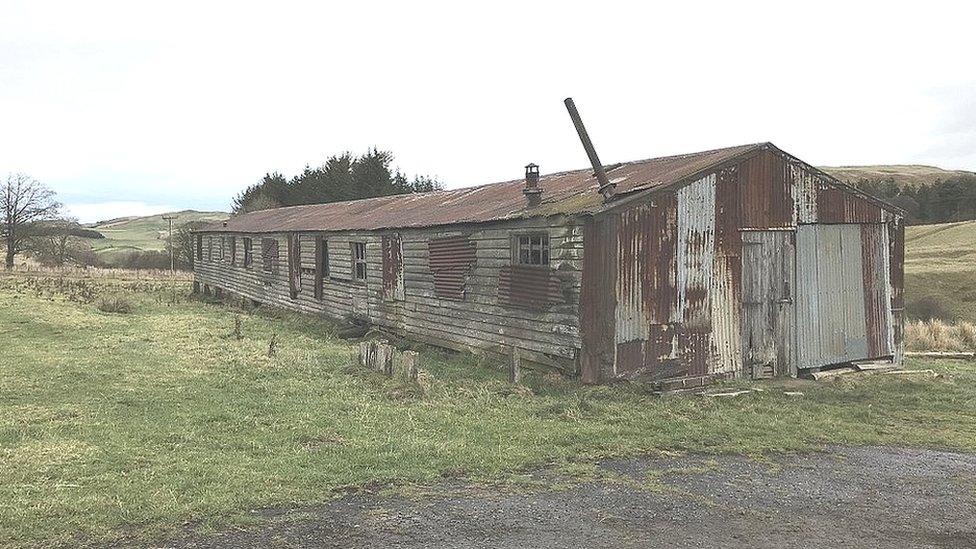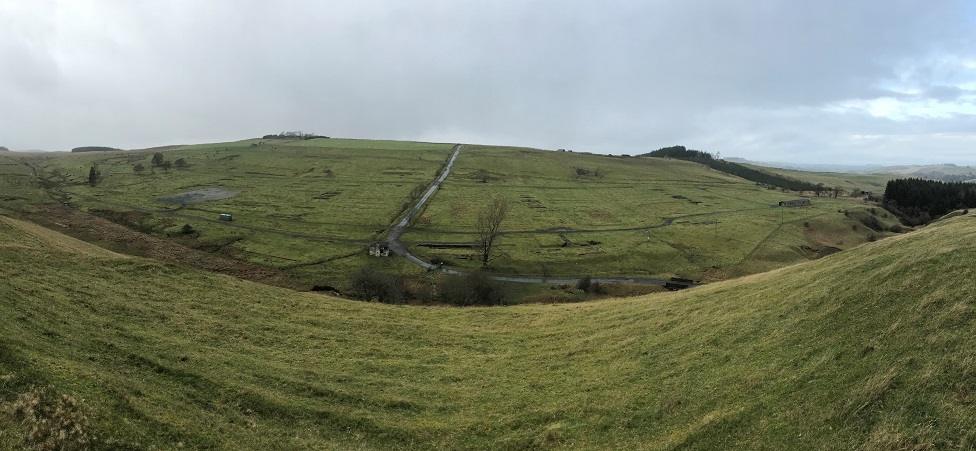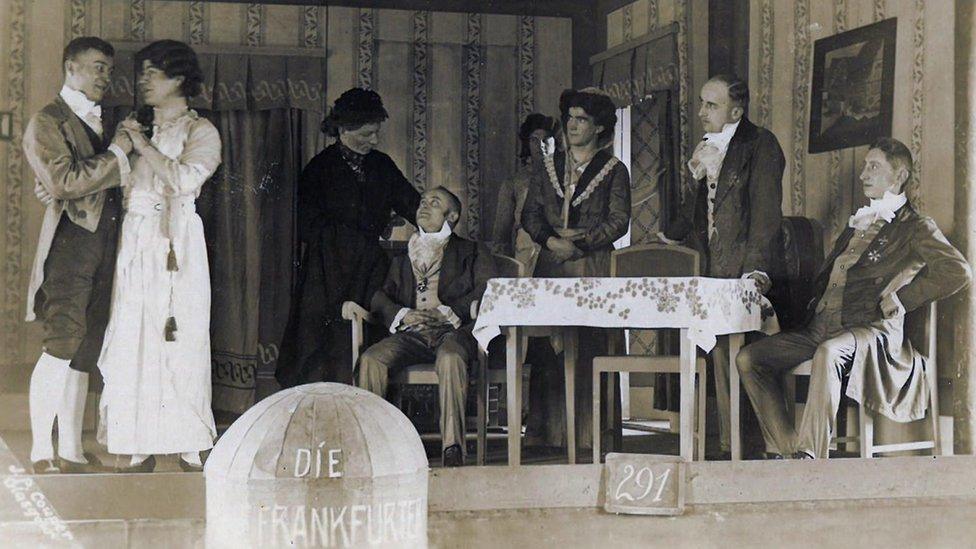National importance of Stobs Camp near Hawick recognised
- Published

The site near Hawick is said to make a "significant contribution" to understanding Scotland's military heritage
An old military training camp in the Scottish Borders has been recognised as a site of national importance.
Key parts of the Stobs Camp near Hawick have been designated as scheduled monuments by Historic Environment Scotland (HES).
HES said it would help safeguard the site - which was used for military training, civilian internment and as a prisoner of war camp.
It is hoped the designation can also raise awareness of the camp.

The Stobs Estate was bought by the War Office in 1902 to create a permanent training base and barracks for one of the Army Corps.
Within months nearly 20,000 troops had been through the camp making its population bigger than Hawick itself at the time.
The most important elements of the site which remain have now been designated as scheduled monuments.
It includes World War One training trenches and firing ranges and a World War Two tracked target range for tanks which is unique to Scotland.

At one stage the camp had a population bigger than the nearby town of Hawick
Stobs is also has the last surviving example of a WW1 prisoner of war accommodation hut still in its original location in the UK.
HES concluded the site was of national importance because of its "significant contribution" to the understanding of Scotland's military heritage.
Head of designations Dara Parsons said: "We're delighted to have had such a positive response to our proposal.
"Designating a site as a scheduled monument helps to recognise what is most special and ensures that significance informs long-term management for future generations."

The site in the Borders has served a number of purposes over the years
Dianne Swift, development manager at Archaeology Scotland, said it had supported investigation and learning at the site since 2016.
"Its designation as a scheduled monument will help raise awareness of the important work they have delivered and ensure the stories relating to Stobs Camp are more widely known," she said.
Related topics
- Published9 February 2023

- Published27 February 2018
